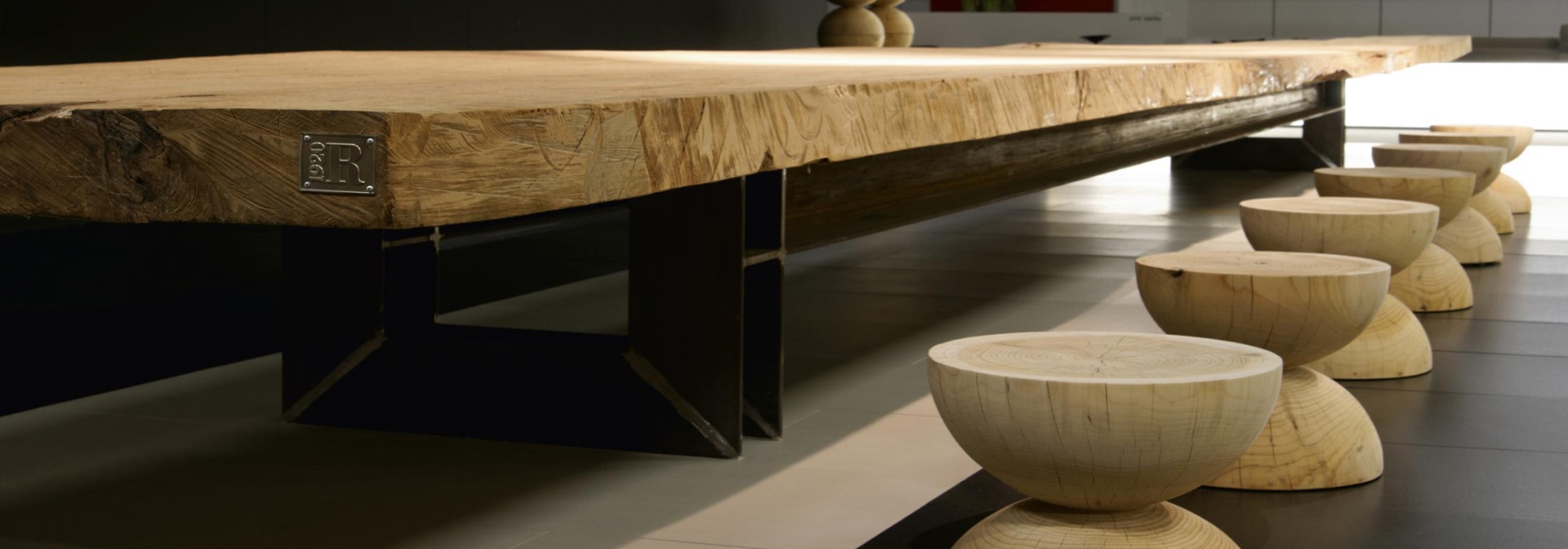Trusting the emerging environmental awareness and riding the wave of resonant attention that the wood industry, the policy of trees, and its impact on the biosphere of the planet have received thanks to recent multidisciplinary investigations on the subject, one of all the exhibition Cambio at the Centro Pecci in Prato, we at TGSOP present a virtuous example of sustainable design with reused wood. This is the result achieved by the collection of chairs designed by Giovanni Tomasini for Riva 1920. As discussed in previous articles, design, quality materials and eco-sustainability come together in the service of a new concept of luxury furniture.
Because the value of furniture can no longer be linked to obsolete terms such as exclusivity and wealth. Rather, honesty in design, the longevity of the material, and respect for the environment are the diktats necessary today to enrich spaces and improve the quality of living. So let’s discover together the context, the skills, and the commitment behind a project of this magnitude.

Who is Giovanni Tomasini and from what does the success of your collaboration with Riva 1920 derive?
Boasting more than ten years of experience in product design, a sector in which he has stood out for the design sensitivity with which he dedicates himself to the ennoblement of sustainable materials, Giovanni Tomasini is the designer born in 1985 to whom Riva 1920 has entrusted the task of celebrating its industrial centenary. Thus, with the strength of his previous collaborations with international brands, together with which he has carved out an important place for himself in the field of green design, the art director and university lecturer from Brescia has once again managed to move with ease between the ancient artisan tradition and the most innovative processing techniques.
Those for Riva 1920, in fact, are refined one-piece chairs in solid cedar that, finished by hand and without the use of any treatment, emphasize the qualities of the balsamic wood of each trunk from which their volumes are carved.
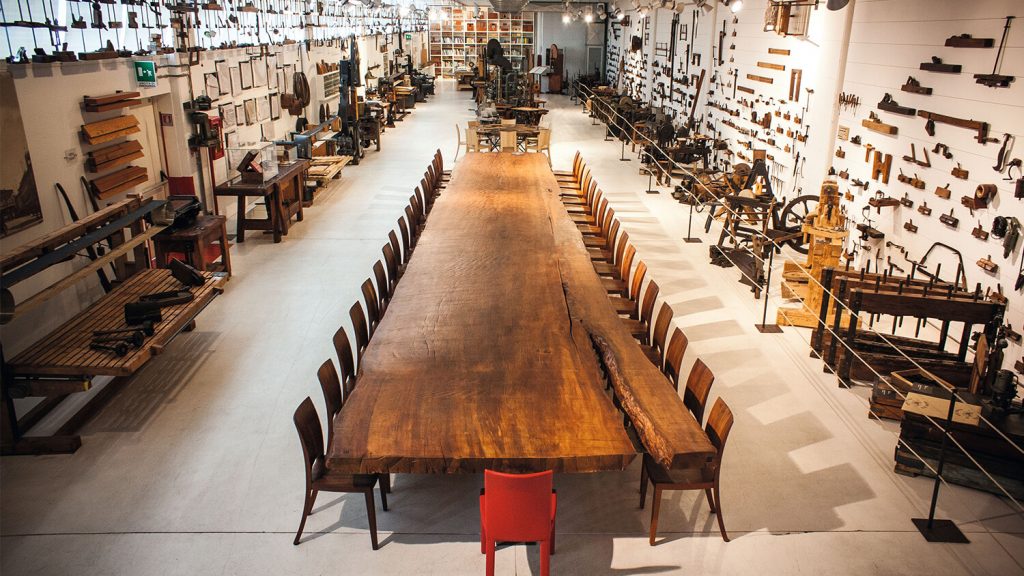
And how has that green commitment resulted in this seating collection?
Four stools and a bench have in fact contributed to pay homage to the commitment of the historic Brianza-based company to use only cedar trees that have fallen or have been recovered from scheduled cuts for safety reasons. The cedar of Lebanon in question is a fragrant evergreen conifer that, thanks to its resin, also has a natural mothproofing effect. What’s more, its remarkable resistance to humidity has allowed Giovanni Tomasini to present a family of pieces that can all be used outdoors.
Slalom, Rotterdam, Diamond, Notre Dame, and Dolmen are therefore the manifestos of a design that distances itself from the usual self-referential formal exercises. At times paying homage to Dutch architecture or the more complex French Gothic style, those by Tomasini for Riva 1920 are in fact objects born of deep respect for the environment. As well as an in-depth ergonomic study. It is in the name of a mature design ethic, in fact, that solids and voids alternate to create footrests or handles. Here, it is evident how form, comfort, and stability are in no way detached from respect for the material through which they are expressed.
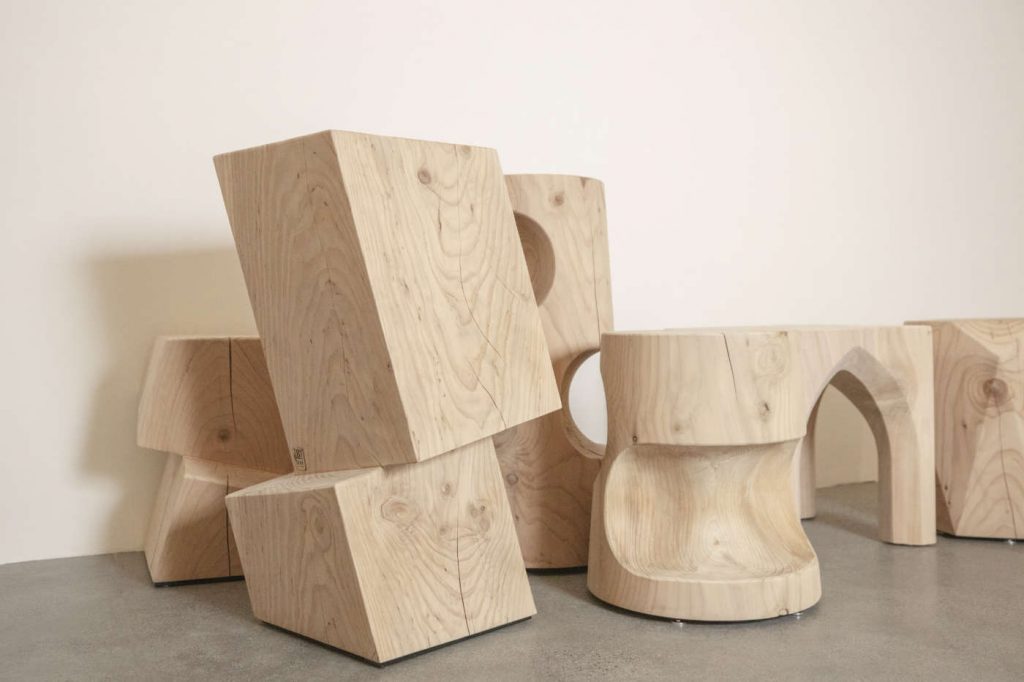
But when and how does Riva 1920 get into sustainable design?
Since the end of the 1970s, that small family-run workshop founded in Cantù by Nino Romano in 1920 has distinguished itself in the field of made-to-measure furniture by enhancing the value of wood through the use of completely natural waxes and oils. The siblings Maurizio, Davide, and Anna Riva then inaugurated the first production unit in 1987 so as to participate in the International Furniture Fair in Milan in 1992. Well, starting from that date, alongside the woods coming from programmed cuts, the company introduced reused woods. These included the thousand-year-old Kauri from New Zealand, Briccole from the Venice Lagoon, and Cedar from Lebanon. And despite subsequent unparalleled achievements, such as the opening of two more production units and the establishment of the Riva Center by Renzo Piano Building Workshop, Riva 1920 has maintained its motivating ecological thinking unchanged.
“Producing with honesty to pass on to future generations, making furniture that defies time while fully respecting the environment.”
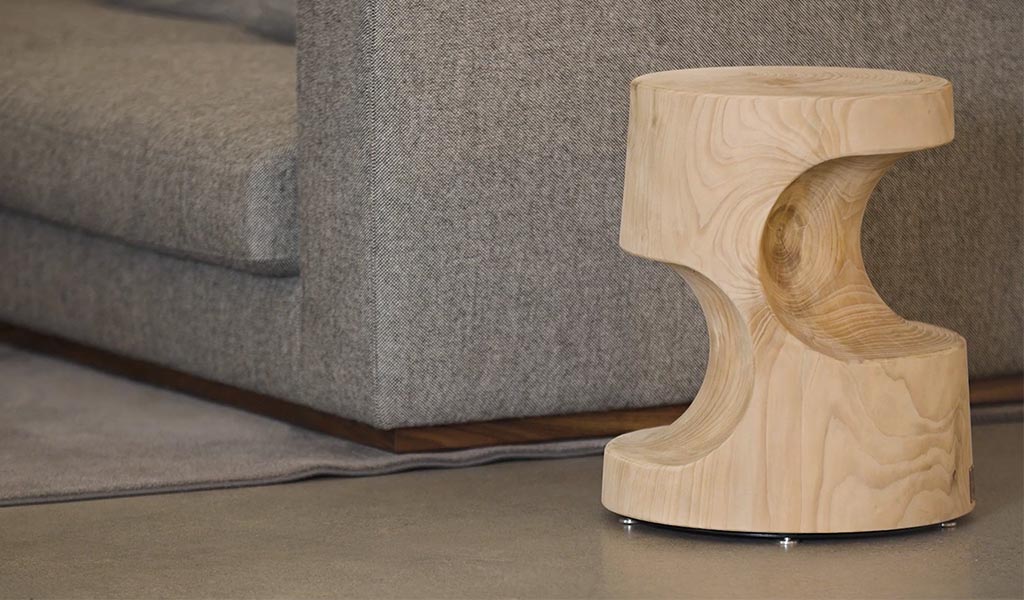
And what does Riva 1920’s sustainable vision actually consist of?
As anticipated, the idea of luxury promoted by Riva 1920 is to be found in the living of sustainable and ecological spaces. In fact, every component of their furniture undergoes a detailed quality and functional conformity tests. Added to this is the use of vinyl adhesives and vegetable oil and wax finishes, a guarantee of an authentic and completely natural product. Riva 1920 also pays particular attention to the packaging of its products, using only cardboard packaging with FSC Forest Stewardship Council Certification. This implies that they are made using cellulose from forests where the criteria of sustainable forest management are followed. Lastly, it should also be recalled that every time a tree is cut down to produce furniture, Riva 1920 replants others. In this way, the circle of life is not interrupted and nature is given back what it has given.
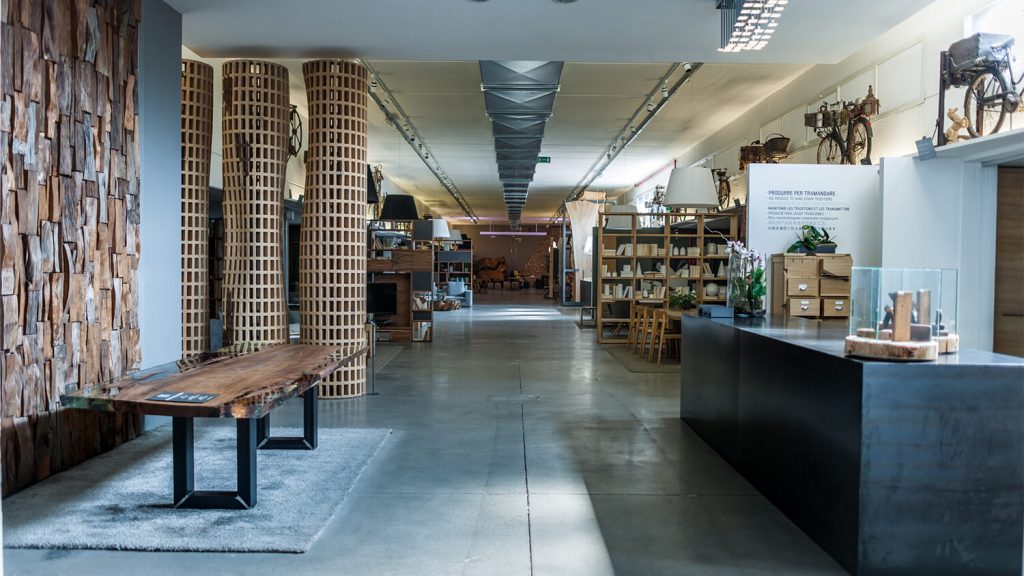
In general, then, their constant commitment is manifested in the design, customization, and production of products that enrich spaces, connecting people, and promoting sustainable development. All is always thanks to the longevity of the same artifacts. Therefore, always proud to preserve craftsmanship in the age of technology, the Riva brothers have become spokesmen for a vision of the planet for which creativity, design, and innovation are the main factors in reshaping society. The goal, again, is to preserve an intact living environment for future generations.
So, what findings confirm that eco-sustainability is a necessary frontier for the world of furniture?
There are certainly many reasons why Riva 1920 has become one of the most important names in the furniture field. The entrepreneurial intuition of the Riva family has been fundamental in favoring the technological and stylistic evolution of the company. In 2013, they opened a third production unit specialized in the processing of cedar logs. Then, in 2017, they inaugurated the second floor of the Riva Center and a xylotheque with woods from all over the world.
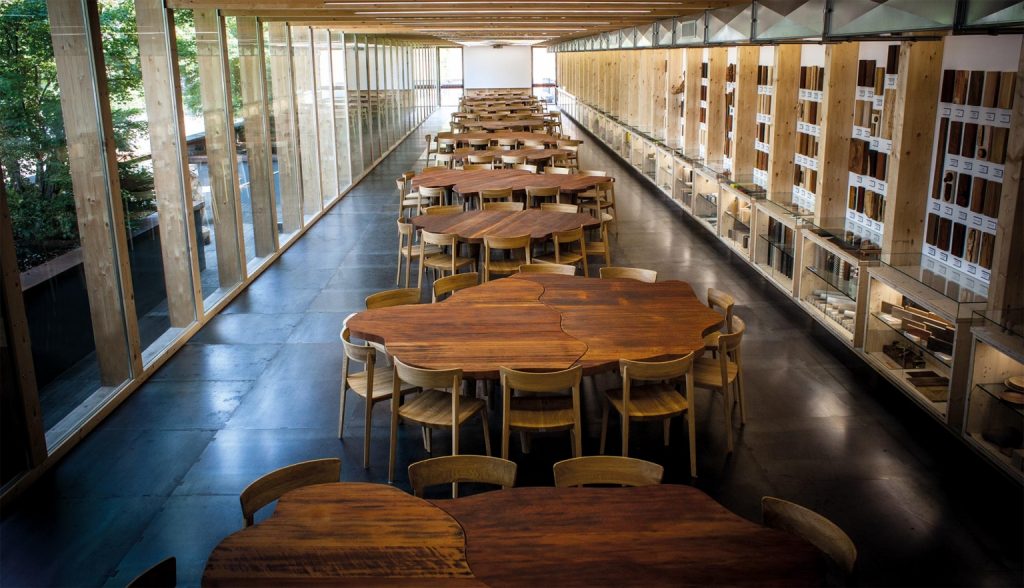
But it was the orientation of production towards the world of sustainable design that was the real driving force behind the company’s success. In fact, this has given rise to new collaborations with international archistars as well as with the great masters of Italian design. But that is not all. Here we have had the opportunity to investigate how, alongside the names of Mendini, Fiorucci, Mari, Starck, Piano, or De Lucchi, the figure of an emerging designer such as Giovanni Tomasini has been well appreciated. Indeed, Riva 1920 represents a Made in Italy open to young designers and to the future, always remaining faithful to its principles. Theirs, therefore, is certainly a successful experience consolidated over a century, made up as much of tradition and culture as of experimentation and innovation.


